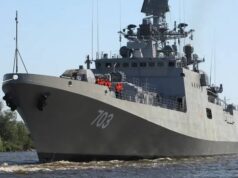INDIA will soon become A MAJOR HUB FOR DEFENCE MANUFACTURING
 By
By
Colonel Awadhesh Kumar, Special Forces Veteran
When newly posted to Army HQ, I attended my first meeting in the impressive building ( from outside only ) called the South Block. It was regarding availability and release of training ammunition and numerous other things connected with it. Every thing had been tabulated to the minutest details and there was nothing which non technical officers from Other branches could add or question, especially some one like me. There was a big gathering and heavy snacks had been served even while discussion was going on between the technicals.
Keeping myself busy with the 5 star snacks, suddenly I noticed that there was 100% percent restriction placed on firing of missiles for the newly inducted T90 tanks. Here I was attending the conference as the rep of the Director General Military Training. So when the Chairman taking the conference was nearly concluding, I raised an objection. During basic training of the crew including the would be gunners of the new tanks being inducted, atleast the actual earmarked gunners, must be permitted to fire one missile each. At least 90 missiles were thus required for the two regiments being inducted.
The Chairman, suddenly taken aback, said that matter already had the approval of the VCOAS and COAS. However, I still insisted that before taking the final decision, it was incumbent on the decision makers to take the advice of the DGMT ( in this case I was rendering it on behalf the DGMT) and there after reject it, modify it or accept it. While walking back to Sena Bhawan, the GSO1 who was from the Armoured Corps was of the firm view that my objections would have no effect, in fact since last two years, he had attended many such conferences and no one had ever raised any objections.
A few days later, Lt Col Pratap Hardas was delighted. Our objections were taken seriously at the highest level and lo and behold accepted. The above story has been narrated to stress the fact every Directorate, every appointment have a given set of role and function, which they must carry out diligently.
Thus devising a GSQR formulation for any weapon or equipment is a very objective, transparent and futuristic looking process. Any new weapon system takes any thing up to a decade for development, another 4 to 5 years for assimilation into the system after initial induction and then it must effectively remain in service for say next 20 to 30 years. Therefore those tasked with formulating the GSQR should not be burdened with any extraneous parameters not even of being supportive of domestic manufacturing and existing capabilities. Giving any such restrictive Terms of Reference will simply be counter productive. Let each chap do his own job in the most perfect manner feasible.
Long time back in 1993, as a Major I was the Principal Staff Officer to Commander Special Forces, Brigadier S S Mann. I had accompanied him, when on taking over Command of HQ Special Forces he was summoned by the COAS. At that time General B C Joshi, looking directly at me had said “ young man do not hesitate in even asking for the moon, if we are unable to provide you with wherewithal asked for, then till that time we will request the SF to make do with what is provided.”
So the GSQR makers should at no stage be asked to dilute their requirement whatsoever. In case the DRDO is unable to meet any of the parameters or all of the parameters, then they must say that in writing to DMA, HQ IDS and the concerned Service HQ. Whatever is achievable should be put down in writing along with the time frame required. The Apex leadership both Political and Military must be made aware and then the DPP must decide as to what should be developed / produced immediately as per the GSQR and what can be added later on incrementally to the product again as per the GSQR.
The current Tejas is the best example. Instead of endlessly waiting for the best LCA, IAF has gone in for two squadrons of MK1 and then four squadrons of MK1A. Next we should hopefully go in for nine squadrons of Mk2 variety. Finally the dream Six squadrons of Kaveri engined Tejas Mk3 should be there making India fully “Atamanirbhar”.
Neither DRDO nor any defence PSU should be permitted to ever utter that the GSQR is Unrealistic. Such articulation regarding the GSQRs has only derailed many an acquisition programme for the defence services because then the decision makers do not know what to do or they refuse to do what they should do
Instead the DRDO and other local designers should study the GSQR in detail and then clearly spell out what they can design and in what time frame instead of hiding their sloth and / or incompetence behind the “ unattainable” GSQR. Promoting or improving the local design and manufacturing has nothing to do with formulation of the GSQR.
In fact, it is most surprising that accountants of Comptroller and Auditor General have repeatedly “ pointed out “ that overly ambitious weapons specifications have favoured imports at the cost of domestic industry. Well, what will be their reaction if they are asked to dilute their accounting and auditing standards ?
To reduce imports, first the DRDO has to improve its own standards, both the government and private sector have to spend more on research and development and work harder and diligently at the same time. Despite its large defence R&D base and significant production capacities, India remains one of the world’s largest arms importers, why ?
The FM’s announcement of a ban on import of certain items, to be notified in consultation with the Department of Military Affairs (DMA) headed by the chief of defence staff (CDS) is just one aspect but it can become a major hazard for the defence forces. After all the Forces need wherewithal to fight a war, it cannot be done with stones and sticks or second grade weapons.
Therefore along with this ban, the DMA and HQ IDS should also be empowered to ensure full accountability from Department of Defence Production, DGQA and DRDO. Indigenous manufacturing of weapons, equipment and their spares and ammunition that have been hitherto imported have to meet the highest quality as laid down ….or next there will be asking for dilution of the quality too.
The publication of a negative list will certainly throw much-needed light on Government of India plans for indigenisation. However it is the Cabinet, the PMO, the DMA,Dof D the DRDO and the DoDP that must encourage the, weapon designers and producers and quality controllers to develop a common interest in ensuring the success of indigenous projects. The onus of this burden should not be put on the Armed Forces and the Armed Forces in their turn should flatly refuse any such move. Accountability needs to be fixed at all levels.
whatever reaches the Armed Forces should be tested, tried out in all possible manner and all the shortcomings should be pointed out to all concerned from the Raksha Mantri downwards to CDS and all other stake holders. Time frame for rectification should also be given, failing which alternate arrangements be firmly asked for. Only then the measures announced by the Finance Minister, in tandem with other policy initiatives of the past six years, will have the potential to promote self-reliance and transform India into a major defence manufacturing hub.
Given the financial and technological capacities of the public and private sectors in India, there is no reason why the armed forces should be given imported artillery guns, tanks, troop carriers, ammunition, electronic warfare systems, warships and even helicopters and fighters by the MoD and its Department of Defence Production
Ideally, the defence ministry should reflect the newly announced budget provision for local procurement in its defence services estimates (DSE), the annual document that provides break-ups of allocations for defence services, including Defence Research and Development Organisation (DRDO) and Ordnance Factory Board (OFB). DSE could be modified to clearly indicate whether a specific item is being procured through import or indigenous sources and the time frame …..right down to unit level induction should be clearly spelt out.
A major move in making India Atmanirbhar in defence manufacturing will be the reorganization of the 41 defence Public Sector Undertakings and its controller the Ordinance Factory Board. All 80000 workforce from top to bottom have to be made accountable. It has vast potential which may come out only when it is made fully autonomous and 200% accountable.
The foreign direct investment, earlier capped at 49% has also been increased to 74%. This will promote make in India thus generating more employment. The DPP has to take the final decision for each case, without permitting any one to hide behind “ UNREALISTIC “ GSQR.




